CCA CRA Review: The Best Deal in Audio
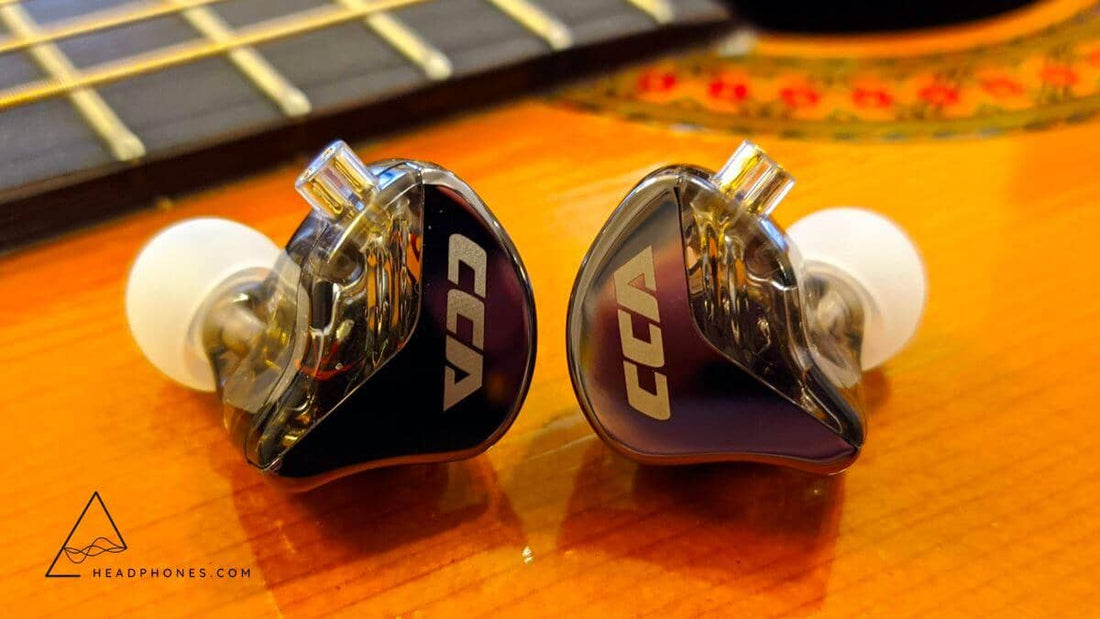
Review written by @Fc-Construct
Review unit provided by KZ
Introduction
Last time, I took a look at the KZ x Crinacle CRN (ZEX Pro), KZ’s latest offering in collaboration with well-known reviewer Crinacle. But when KZ sent me over the ZEX Pro, they also urged me to review another IEM with a promise that “you will like it”. With such a compelling proposition, how could I say no?
Thus, I have before the me CCA CRA. For those who don’t know, CCA is actually KZ’s sister company/sub-brand. I believe they were branched off a few years ago and developed some of their own designs. But as far as I’m concerned, CCA is effectively KZ with a different name. At any rate, the CCA CRA I have today is a single DD IEM with a very wallet friendly cost of $23 on KZ’s website (though you can find it for $15 at other stores). What’s particularly interesting is that the CCA CRA is not a collaboration with Crinacle. It is a purely KZ/CCA developed product that they seem to be pushing rather hard this time around. Let’s get into it and see what all the fuss is about!
 |
Shop the best selection of In-Ear Headphones at Headphones.com. |
Note: Please do read the KZ ZEX Pro review first as this review will reference that one.
What’s in the Box?
A look at the CCA CRA’s box makes it very clear that CCA is not trying to hide the fact that they’re basically KZ. The box and packaging style are identical, a simplistic white box containing nothing but the bare necessities: the IEM, the cable, and three sets of generic silicon tips. The QDC-style 2-pin cable is actually the same as the one found in the ZEX Pro with the exception of a copper color instead of silver. It works well enough.
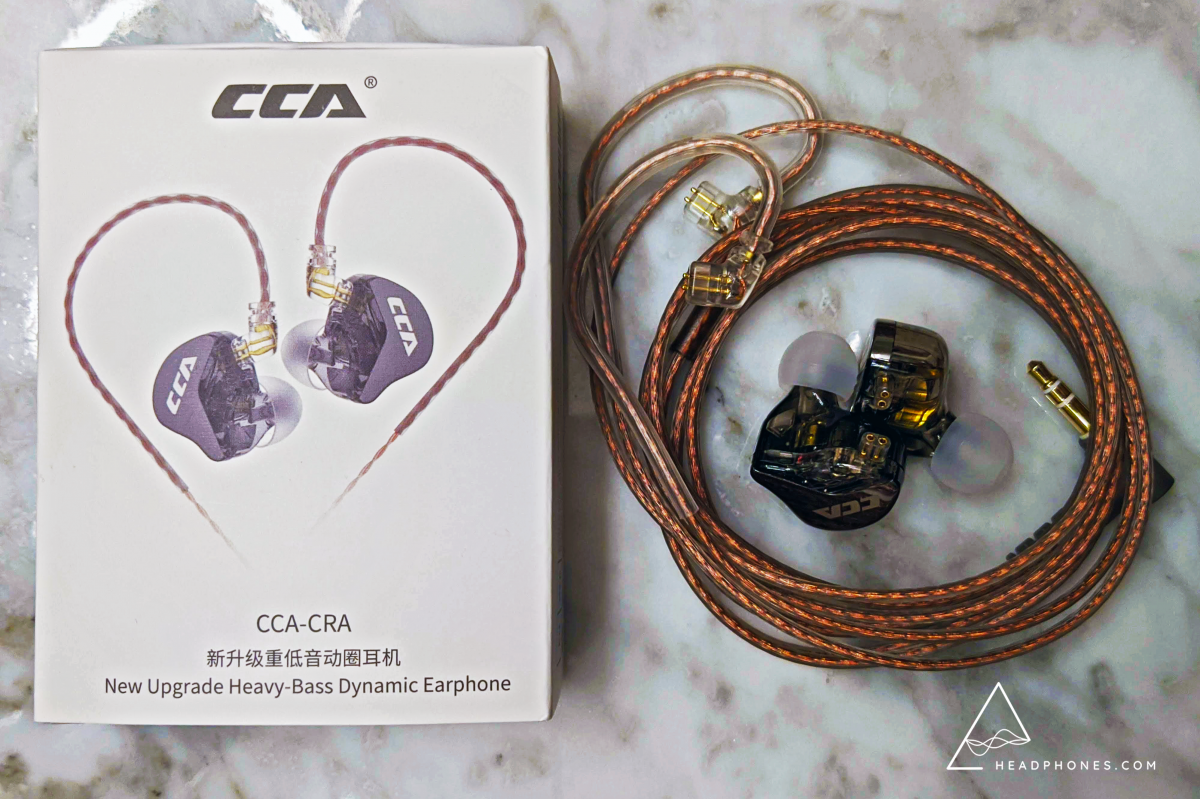
The shell of the CCA CRA is another one of those pseudo-ergonomic plastic translucent resin shells. On the back of it is a metal faceplate with the CCA logo for aesthetic purposes. These faceplates soon fell off to reveal that its actually a very thin piece of metal lightly glued on to the resin. Feels like CCA could’ve saved a fraction of a penny by excluding these faceplates altogether if they’re going to fall off anyways, but I digress.
Sound
First impressions of the CCA CRA left a smile on my face. The bass is fun and its treble energetic. And unlike many V-shaped implementations, the CRA doesn’t sound totally hollow in the mids. To quote a friend: It's like a baby Empire Ears Legends Evo. I can’t think of the last time a budget IEM left me this immediately impressed. From the first 5 minutes I already like this way more than the KZ ZEX Pro. Sorry Crinacle.
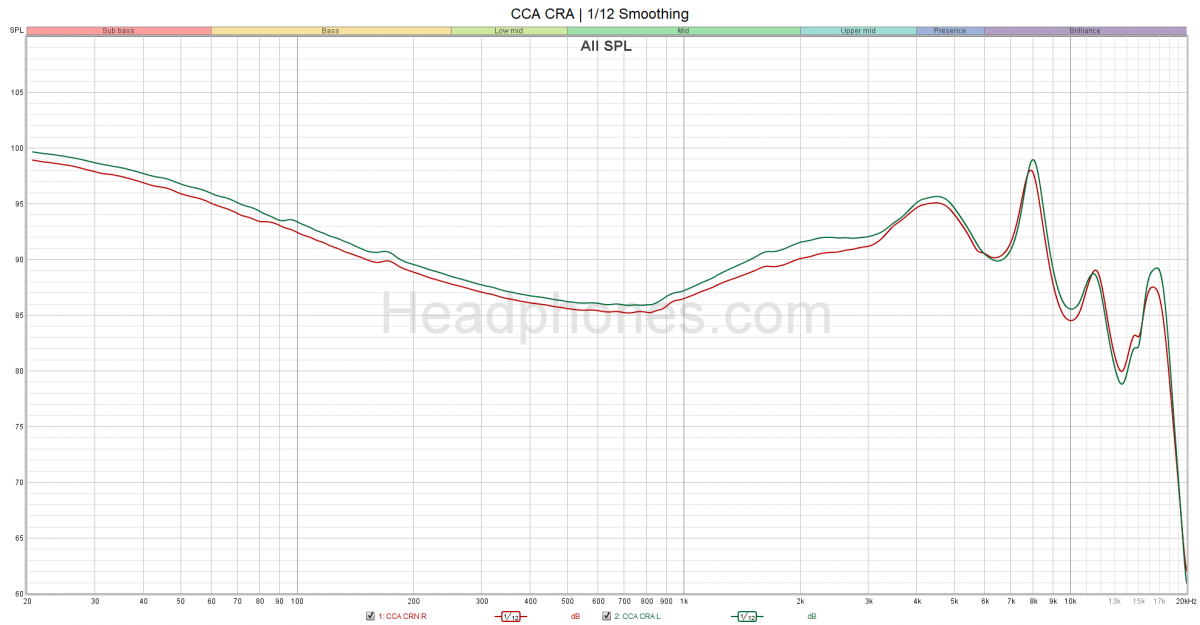
Frequency response of the CCA CRA. Measurement taken with an IEC-711 clone microphone. Comparisons can only be made to other measurements taken by this specific microphone. A peak at about 8 – 10 kHz is likely an artifact of the microphone. It likely does not actually exist as depicted here.
Bass
The bass is the first and most defining aspect of the CCA CRA. It’s unabashedly bassy to the point where I’d consider it basshead worthy. It hits hard with a weighty sense of impact. You hear this most on drums such as the floor tom. The bass extends deep with a subbass that growls and rumbles. It’s boomy in a wholly enjoyable way with transients that are sufficiently sharp and a controlled yet indulgent decay. It’s a textbook dynamic driver bass response. To put it in colloquial terms: it’s F A T.
Despite the heavy bass emphasis, I don’t find the bass of the CRA overpowers the rest of the music or other instruments. Nor do I have a problem with mud or bloom either. In fact, there’s a surprising level of resolution here given its bombastic nature and cheap price tag. Bass guitar lines are clearly picked up and notes weaved through the mix. Though it may feel “dirty” at times, the bass response of the CCA CRA is a whole ton of fun to listen to. I’d take it over the ZEX Pro’s bass any day.
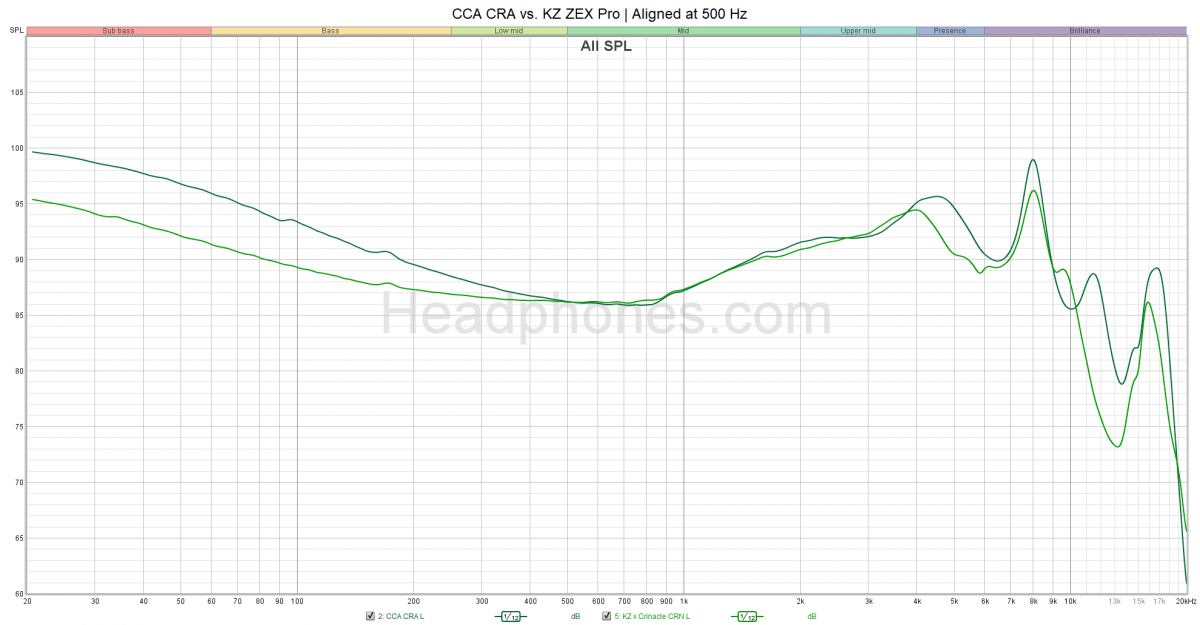
Mids
Given its single DD nature, the CCA CRA doesn’t suffer from any incoherencies that may plague hybrids as they transition from the bass to the lower mids. The lower mids are quite elevated following the bass, providing an abundance of body to instruments. With a pinna gain of only about 5 – 6 dB at 3 kHz, the CCA CRA nudges vocals forward with reasonable tonal balance and presence while tactfully avoiding the typical trap of stridency or hollowness found in V-shaped gear. I do think the CCA CRA’s vocal performance is better than the KZ ZEX Pro’s as it doesn’t have the same wonkiness found in it.
Treble
The one weak point of the CCA CRA in my eye lies in its treble. There is a sizeable lower treble hump around the 4 – 5 kHz that has three effects. The first is sibilance. While vocal clarity is enhanced by this peak, Sss’s are noticeably sharper than the ZEX Pro and may be a concern for some. Second is that the pluck of stringed instruments has an exaggerrated pop to them. Finally, the crisp attack of the hats and cymbals are particularly emphasized, causing timbre to be imbalanced. There however aren't dealbreakers for me in any way and I like the CCA CRA's upper treble brilliance and liveliness despite a couple of peaks.
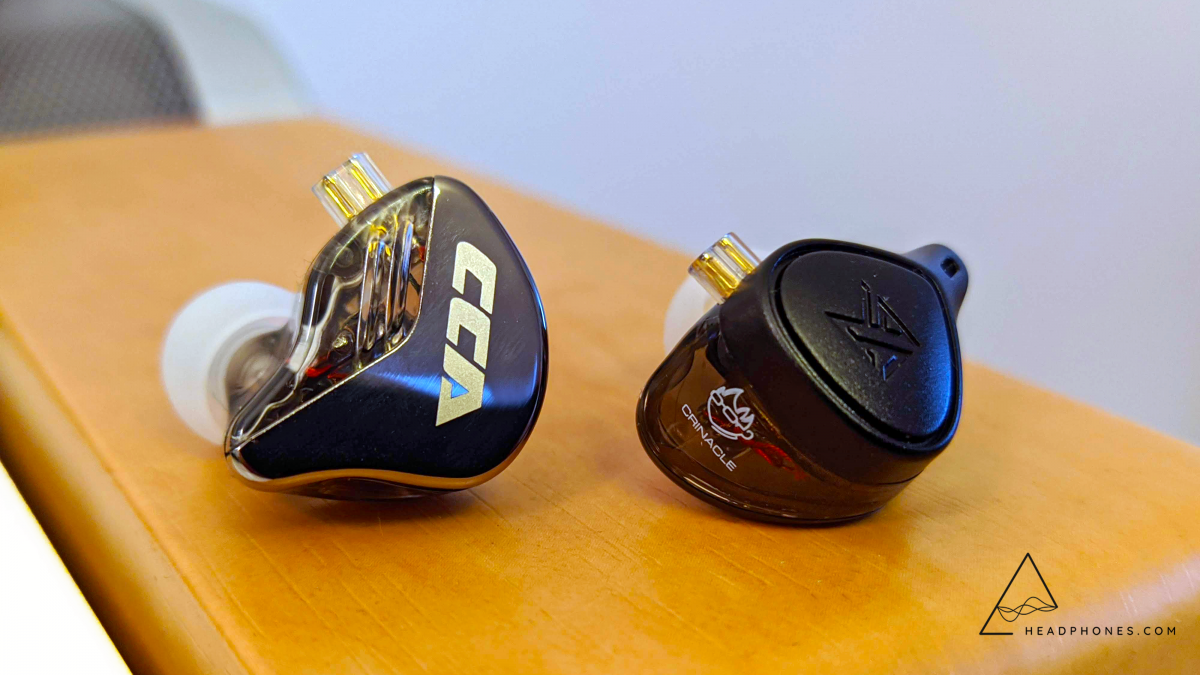
Presentation
The presentation of the CCA CRA is stereotypically IEM-like. Soundstage is average and imaging is mostly left, right, center. Music is played on a rather flat plane without much depth. I find that a lack of stage depth typically precludes layering ability and that holds true for the CCA CRA.
Resolution and instrument separation is fairly good here. It definitely doesn’t sound glaringly lo-fi like some other budget IEMs I’ve reviewed. For all of its bass, I’m not struck with the feeling that the CCA CRA needs help in terms of clarity. In fact, I’d even say it bests the KZ ZEX Pro. I’m honestly content with the level of performance that the CCA CRA exhibits here. Better staging would just be the cherry on the top.
Comparison to MoonDrop Aria
As I spent time with the CCA CRA for this review, I thought that it might even compete against the Aria. But upon doing a proper back-to-back comparison, the Aria does come out solidly on top. Tuning wise, the Aria is much more neutral and balanced, with a smoother overall feel and better tonality. But if you’re planning to buy the CCA CRA anyway, neutrality be damned.
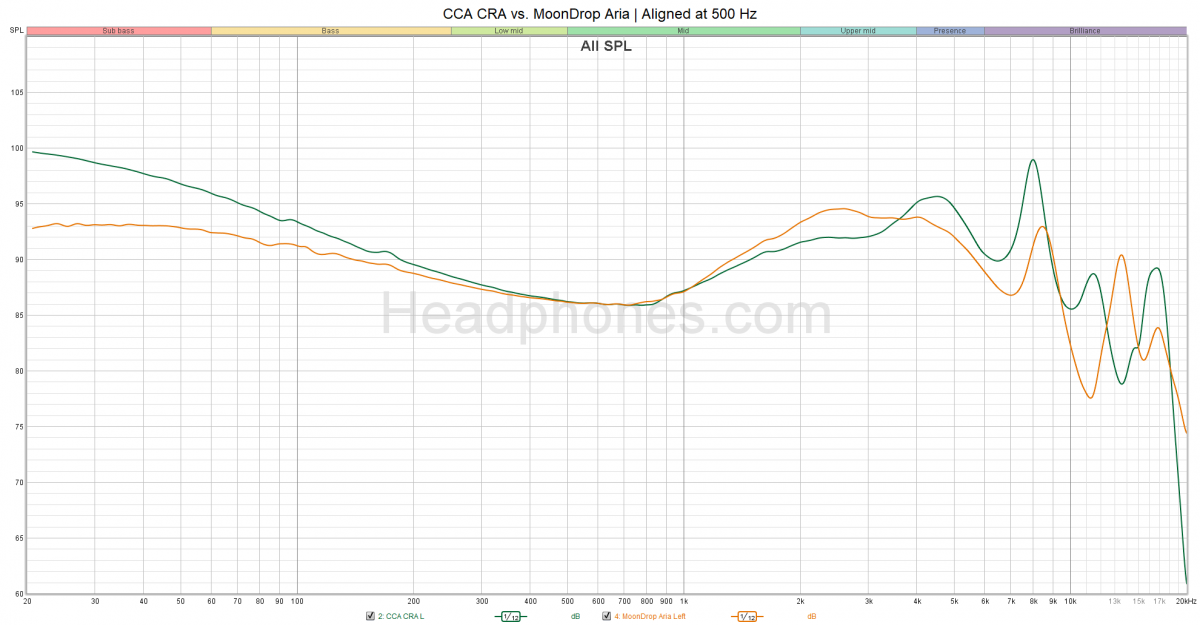 From a technical perspective, the Aria has better note definition and instrument separation, greater soundstage width and depth with better imaging, and cleaner resolution. The difference isn’t night and day, but it is enough to be a clear winner.
From a technical perspective, the Aria has better note definition and instrument separation, greater soundstage width and depth with better imaging, and cleaner resolution. The difference isn’t night and day, but it is enough to be a clear winner.
Love our in-depth reviews? Sign up for our newsletter to get notified about more in-depth reviews, upcoming products, and deals for Headphones.com
Should You Buy It?
Absolutely. If you haven’t figured it out, the CCA CRA is a superb IEM with a mere price tag of $15 – $20 or so. I thoroughly enjoyed listening to it for this review and will certainly keep it as a part of my collection, likely pairing it with the KZ AZ09 Pro TWS module for a cheap wireless beater setup. But don’t let the fact that I suggest it as a beater imply that the CCA CRA is somehow unworthy of being a daily driver. While it may be cheap in price and build, it’s far from cheap in sound quality. If you’re looking for a budget friendly V-shaped or bass centric IEM, the CCA CRA is one of the first IEMs you should look at.
I think the reason the CCA CRA has enamoured me so much is that it doesn’t shy away from being a bass heavy, V-shaped IEM. In a market where the many IEMs have converged into minor variants of a balanced tuning, this attempt at being different is a breath of fresh air. After all, not everyone wants neutrality. And make no mistake, it’s not just the attempt that matters. It’s that CCA has succeeded where so many have failed before. Let me be the first to give them a well-deserved round of applause.
-Fc-Construct
---
Discuss the CCA CRA and other budget IEMs on the HEADPHONE Community Forum here.
---
